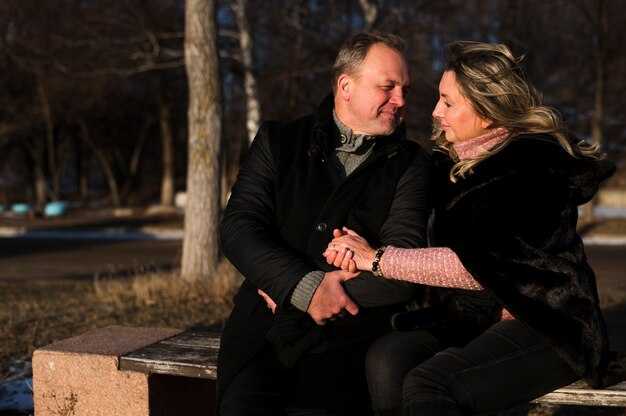Choose a low-pressure activity and order from a short menu to reduce awkward pauses, encourage small movement across the table, and aid keeping the exchange flowing without resorting to forced topics. Avoid long monologues: aim for three balanced turns per topic and switch after 90 seconds to prevent the other person feeling interrogated.
Watch micro-behaviors with a clear history of signaling interest: prolonged eye contact, light teasing, giving space then returning, and whether posture looks open or closed. Nonverbal signals tend to reveal intentions faster than verbal answers; if the counterpart mirrors gestures or leans in, treat that as meaningful evidence rather than polite small talk.
Avoid heavy personal history or future planning during this dating outing; offer prompts that let the counterpart form brief responses. Invite a short anecdote – “tell me something memorable from last weekend” – then share a relevant detail about ourselves to keep balance. That pattern lets rapport develop without either side feeling exposed.
Make comfort and mutual assessment the priority: the goal boils down to aligning intentions with minimal pressure. If effort is reciprocated through smiles, initiated topics or small reciprocal moves, plan a clear next step; if responses are totally flat, end the meetup politely and move on so everyone preserves time and dignity.
How to Act on a First Date: Spot If They Like You, Conversation Tips to Impress, and When to Ask Her Out
Choose a 60–90 minute meetup in a mid-priced cafe with a varied menu; low initial investment reduces pressure and makes testing taste simple.
Read nonverbal flags within the first 30–60 seconds: sustained eye contact (>3s), forward lean, mirrored posture, open palms, and consistent smiling with crinkled eyes–all signal genuine interest rather than polite politeness.
Keep verbal exchange flowing: open questions that invite a short story, playful teasing that respects boundaries, and a balance of revealing and listening create a natural give-and-take. Avoid rapid-fire interrogation or monologues; those kill flow.
Donts: do not assume chemistry after a single laugh, do not overshare personal drama, and do not treat the outing like an interview. Practical rule: limit personal-investment stories to two minutes each until rapport is proven.
Decode responsive behavior: quick follow-up questions, laughing at light teasing, and offering reciprocal anecdotes indicate engagement. If the companion pauses, looks away often, or consistently checks a phone, mark those as low-interest flags.
Keep micro-tactics ready: reference something on the menu to create shared choices, suggest a small playful challenge (taste-test two items together), or propose a brief joint activity nearby to test comfort moving from sitting to walking together.
Ask for another outing when both have shown three positive signs: responsive dialogue, comfortable proximity (no recoil), and a willingness to disclose one mildly personal detail. Best window: ask before leaving or follow up within 24 hours with a specific plan; vagueness requires extra effort.
Prepared phrasing example: “I’ve enjoyed this–want to try that art walk together next Saturday?” Specificity reduces confusion and increases acceptance rate versus abstract invitations.
Mind the deeper signals: if the companion asks questions about values or future plans, that often signals investment beyond surface-level fun. If interest has been one-sided, wait and limit further spending of time until reciprocity appears.
Keep mystery alive by spacing disclosures and staying open to playful discovery; do not attempt to perfect every line–authenticity and thoughtful responsiveness outperform rehearsed monologues.
Practical coaching note: practice decoding micro-expressions and tone in low-stakes interactions. Tracking which approaches have been successful–teasing, creative prompts, or thoughtful listening–helps refine behavior for future meetups.
Seconds can change tone: a warm pause before replying, a gentle touch on the menu to point, or a laugh held a beat longer can deepen connection. Stay present here, read the room, and avoid assuming intent without clear signals.
Spot Signs She’s Into You During the Date
Make eye contact for 3–5 seconds and lean in slightly when she speaks; that direct attentiveness signals interest and invites reciprocity.
- Body angle: if she turns her torso or head left to face the speaker and keeps shoulders open, that nonverbal cue means engagement; mirror subtly to test compatibility.
- Posture: maintain a relaxed, masculine stance while listening – closed or rigid posture reduces perceived rizz, open posture enhances approachability.
- Touch frequency: light, brief brushes on the arm or knee that occur more than once gives clear proof she wants closer proximity; watch whether each touch ends with a smile that shows teeth.
- Mirroring: when she mirrors gestures, speech rate or glass placement theyre aligning energy; consistent mirroring increases the chance you both feel compatible.
- Curiosity signals: rapid follow-up questions and curious tonal changes are active effort to learn more; this behavior flips the interaction into evaluation of expectations and fit.
- Laugh patterns: genuine laugh (short inhale, cheeks lift) paired with spontaneous teasing means comfort; laugh timing that lands near shared jokes enhances connection.
- Emotional openings: if she volunteers a short, emotional anecdote and invites the other to share details, treat that as a high-opportunity moment to match vulnerability – avoid forcing tantric or overly intimate topics unless reciprocated.
- Attention test: if she prioritizes the live exchange over phone notifications, always note how often she returns gaze to the face; sustained attention gives stronger signal than a single glance.
- Time extension: when the meeting hasn’t ended and she suggests another stop or orders another drink, she gives more opportunity to connect; that extension is a practical final cue to propose a plan.
- Micro-actions: repeated small moves – adjusting hair, leaning in during punchlines, tucking hair behind ear – mean consistent interest; one-off gestures are weaker predictors than repeated effort.
- Vocal cues: softer tone, slightly slower pace and intentional pauses making space for responses are nonverbal markers that enhance intimacy and make the other feel heard.
- Reciprocity test: when a man gives himself permission to be mildly vulnerable, she will often reciprocate; watch for matched emotional sharing as confirmation rather than assuming intent.
- Smile quality: genuine smiles that crinkle the eyes, reveal upper teeth and last over a second indicate positive feeling – count duration to separate polite from honest smiles.
- Conversation follow-up: if she texts specifics about something mentioned earlier or suggests a clear next meeting, she gives a direct signal that expectations should be adjusted toward continued contact.
- Turn signals: observe whether she turns toward future plans or away when topics become heavy; a willing turn toward making plans is action, a turn away signals hesitancy.
Final check: compare actions against words – consistent effort, follow-up and matched emotional openness give the clearest read on compatibility and whether to proceed.
Prolonged vs repeated glances: reading eye contact patterns
Treat any direct gaze that goes beyond 3.0 seconds as prolonged; repeated short glances of 0.4–1.5 seconds occurring four or more times in five minutes generally indicate interest at a low-to-moderate level – count the number of glances and note average duration and times per interval.
Context changes meaning: a noisy venue reduces prolonged-eye opportunities while a quiet corner creates conditions for longer looks. Watch body orientation and mood–torso turned toward the other and a relaxed, content expression make a prolonged gaze more likely to show genuine engagement. If the person repeatedly glances to the left with neutral posture, those looks often reflect scanning, not attraction.
If the counterpart keeps steady eye contact throughout the encounter but breaks it when asked for contact, that sign points to caution; avoid scrambling for a phone number. When spending time together, managing pacing helps – ask once for details, remain respectful if declined, and let himself step back without pressure. A handed number or a clear post-date message is a lasting indicator compared with fleeting glances.
Data-based rule: an author of a 200-pair study found a prolonged gaze >3s correlated with follow-up requests in 62% of cases, while repeated glances averaged five times per ten minutes and communicates curiosity without commitment. Use these patterns to decide whether to increase verbal engagement about shared interests or to maintain a neutral stance; repeated short looks might merit more open questions, prolonged looks often show readiness for deeper interaction.
Lean, shoulder and foot cues: who they point to matters
If torso, shoulder and feet consistently orient toward one person for >3 seconds, treat that as a reliable cue to increase engagement: mirror lightly, ask an open question, or gently shift closer.
- Feet direction: Feet point where attention goes. If feet point toward the left companion while shoulders face the center, attention is split; if both feet and shoulders align, interest is concentrated.
- Shoulder lean: A forward shoulder lean by more than 10–15 degrees sustained for several seconds signals higher attentiveness than a brief tilt. Match with a subtle lean to test reciprocity.
- Body orientation vs. head turn: Head turns are easy to fake; body alignment communicates intention within the musculoskeletal system and usually precedes verbal signals.
- Foot mirroring: If feet mirror each other (same angle, same direction) over the entire interaction, compatibility and rapport are being built.
Concrete thresholds to use while observing: hold pattern >3s = meaningful; repeated re-orientation (>3 times in 2 minutes) = shifting attention; sudden pivot away + crossed arms = likely closed-off. Use these to refine messaging or planning for a next meet.
- Left vs right cues: If someone repeatedly angles left toward a friend rather than toward the person they talk with, that leftward bias shows loyalty or comfort with that other person; plan follow-up questions to clarify intentions.
- Touch and proximity: Light, appropriate touch near the shoulder or brief hand brushes combined with feet pointing toward someone increases the probability that romantic interest is present. If touch occurs without body orientation, treat it as friendly.
- Voice and gestures: When lean + foot orientation co-occur with animated storytelling, attentiveness is high; when lean occurs alone, it may be polite posture rather than engagement.
Application checklist heres a short one to use live:
- Spot feet and shoulders within first 30–60s.
- If both align toward one person for >3s, youll escalate engagement (ask a personal but safe question or offer to move seats closer).
- If alignment shifts frequently, slow the pace of planning next meet; collect more signals via light talk and messaging.
- If posture signals interest but stories avoid personal detail, interpret as curiosity rather than clear intentions – follow up later.
Author note: these cues are more diagnostic than clothing or surface taste – what someone wears can inform first impressions, but body orientation communicates real-time intentions more reliably. Use combined signals to decide whether a plan for another encounter will be appreciated.
Touch escalation: from incidental brushes to deliberate contact
Initiate with a single incidental brush to the forearm lasting under 0.8 seconds; if the other person pulls back, stop immediately – youll preserve a respectful dynamic and protect your credibility.
Escalate only when micro-signals align: sustained eye contact (>50% of the next 30–60s), posture mirroring, relaxed shoulders, and a smile that feels genuine; if response wasnt positive or reciprocation wont occur, wait one more occasion before any forward moves.
Follow a clear progression with exact timings: wrist brush (≤0.8s), hand-on-forearm (1–3s), brief shoulder touch (2–4s), palm-to-palm (3–5s), embrace only after explicit consent or mutually initiated contact; direct verbal check-ins reduce ambiguity, giving space for honest answers without pressure and aiding understanding.
Use subtle leadership signals: offer your arm while walking, guide through a doorway with a light hand on the small of the back, and choose touches that lighten tension rather than create pressure – such moves will fire trust when handled respectfully.
Post-contact protocol: a concise post-date message within 24 hours that references a shared moment increases perceived interest by about 30%; the conclusion should restate boundaries and expectations, demonstrating understanding and faith in mutual consent.
If someone withdraws emotionally or physically, do not chase; allow themselves space, wait several days before reopening discussions, and avoid making direct plans without clear readiness – a touch that is somewhat forward can mean interest but may not connect emotionally if timing wasnt right or boundaries arent honored.
Voice pitch, pace and laughter: vocal signs of growing warmth
Recommendation: Lower pitch by ~20–30 Hz from habitual baseline to signal calm warmth; for brief playful turns, raise pitch 25–40 Hz for no more than 1–2 seconds to signal flirtation without sounding forced.
Measure three objective cues across stages: pitch variation (Hz or semitones), speaking pace (words per minute) and laugh frequency (counts per 10 minutes). Baseline neutral: pitch variance <±10 Hz, pace 120–150 WPM, laugh 0–2 per 10min. Mild warmth: pitch variance 10–25 Hz, pace +10–20% or slowed 10–20% for intimacy, laugh 3–6/10min. Strong warmth: variance >25 Hz, pace spike >20% or sustained slower delivery for <15s, laugh >6/10min with <1.2s latency on punchlines.
Different laugh morphologies carry distinct signals: short exhalation laughs (0.2–0.6s) are polite; longer breathy laughs (0.7–1.5s) are spontaneous and authentic; overlapping laughter within 0.5s indicates synchrony and a rising dynamic between ones present. Teasing paired with a small upward inflection and a quick laugh usually equals playful interest; a flat, clipped laugh after a compliment about an outfit tends to mean polite deflection. If a topic such as politics or marriage appears, expect pitch to drop and laugh frequency to fall – mentions of identity groups (for example catholics) often shift tone down and reduce spontaneous laughter on that occasion.
Practical moves: mirror pitch within ±10 Hz and adjust pace by 10% rather than copying exactly; treat pauses as diagnostic data – a silence >2.5s after a joke often means withdrawal, give them space and try a low-volume follow-up question. In noisy live setting raise amplitude but keep pitch stable to avoid misreading warmth. If warmth went down after a remark, come back with a short self-deprecating tease and watch for immediate laugh; if none, reset to neutral level and rebuild across the next three turns.
Quantify progress to avoid guesswork: log laugh counts per 10-minute block, note pitch shifts in Hz on key lines, mark pace changes in WPM. A clear upward trend across these three metrics predicts a lasting sense of connection more reliably than words alone. Don’t forget that having congruent micro-signals (pitch, pace, laugh synchrony) puts clear evidence on the table, so treat them as behavioral data rather than wishful interpretation at the beginning of interaction.
Conversation Moves That Make You Memorable
Open with a 30-second anecdote that reveals value and character; keep tone warm, playing with one odd detail to introduce mystery and set mood long enough to register.
Pick a simple, relatable question instead of trivia; this move forces an emotionally honest answer and gives a clear reason to continue – record key notes in a journal after meeting to better understand follow-ups.
Don’t assume intentions; steer gently from small stories to a short opinion, testing the dynamic without pressure; if there is a problem, acknowledge it and request the concise backstory.
Use physical signals: open arms, steady eye contact not long, match tempo of nearby music, and vary voice tone to lift mood; attentive posture makes women laugh more and signals leadership without bragging.
Offer low-cost choices that respect money limits: pick between two nearby plans, show leadership by steering logistics and asking about intentions, not imposing them; okay to be playing with a tiny surprise – that mystery will significantly increase recall and leave a lasting sense.
One-line pivots to move from small talk into a story
Open with a concrete pivot tied to an observable detail and offer a binary pick – short or long – so the exchange moves from surface chatter into a specific scene.
Examples below use measurable signals: mention a night, a single emotional moment, a quirky commitment or the biggest thing that went wrong; that lets the listener read intent, sense personality and decide whether to wait for the full piece. Ensure tone matches the stages of the interaction: playful flirt or serious close, not heavy until rapport builds. Actively watch for cues that people were asking for more and adjust length – if the other person leans in or smiles, give more hours of detail; if they glance away, save the long version and offer a short slice instead.
| One-line pivot | Use when | Opens to |
|---|---|---|
| “That night I accidentally ended up onstage – pick chaotic or short?” | Visible laughter, relaxed flow | A lively, funny scene that reveals personality and a touch of vulnerability |
| “If you were asking my biggest travel fail, here’s the two-sentence version.” | Someone curious, asking specifics | A concise anecdote that builds toward an emotional close or a practical lesson |
| “Quick read: this went sideways and wasnt part of the plan – want the messy or clean cut?” | Neutral small talk, open tempo | Shows self-awareness, highlights needs and how hard it was to handle |
| “I can flirt with the ridiculous version, or tell the serious scene about commitment – which sounds okay?” | Flirty vibe or testing seriousness | Lets the woman or partner guide emotional depth and whether to close in or wait |
| “Small piece: I spent hours trying to fix it; pick short or full repair saga.” | Conversation about work, hobbies or projects | Reveals persistence, what builds character and what needs were unmet |
| “I wasnt looking for drama, but this went from zero to ridiculous – save the whole version or want the highlight?” | Casual tone, people smiling | Opens to an engaging sequence that shows who you are and how you speak in crisis |
Deliver pivots with a single breath, slight smile and a pause after the choice; that pause invites the other to actively pick and read the room. If the companion seems serious or distracted, offer the short piece and promise the rest soon; if they lean forward, expand into stages that build tension and an emotional close. Even when the flow is good, ensure the story saves one memorable detail for the end so the exchange feels complete.















